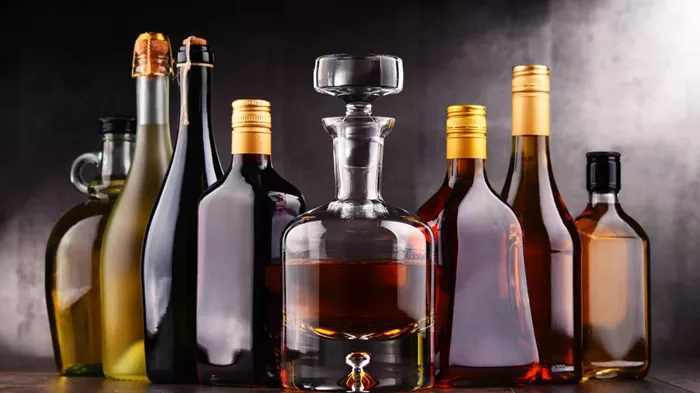Whiskey, the amber elixir cherished by connoisseurs worldwide, holds within its depths a rich tapestry of flavors, aromas, and histories. At the heart of this revered spirit lies the question: what grain is whiskey made from? Delving into the intricacies of whiskey production reveals a fascinating journey of grains, fermentation, and distillation techniques that shape this beloved beverage.
The Foundation of Whiskey: Grains
Understanding the grains that form the backbone of whiskey is essential to grasp its diverse array of flavors and styles. While whiskey can be made from a variety of grains, including corn, barley, rye, and wheat, the choice of grain significantly influences the character of the final product.
Corn: The Sweet Foundation
Corn, with its sweet and mellow profile, serves as the primary grain in many American whiskeys, particularly bourbon. Bourbon, a distinctly American spirit, must contain at least 51% corn in its mash bill. This requirement imparts bourbon with its signature sweetness, complemented by notes of vanilla, caramel, and oak derived from the aging process in charred oak barrels.
Barley: The Backbone of Scotch
In the misty landscapes of Scotland, barley reigns supreme as the cornerstone of Scotch whisky production. Traditionally, Scotch whisky is crafted predominantly from malted barley, which undergoes the malting process to convert starches into fermentable sugars. This transformation imbues Scotch with a complex interplay of flavors, ranging from earthy and malty to fruity and floral, depending on factors such as region, distillation technique, and aging regimen.
Rye: The Spicy Accomplice
Rye whiskey, celebrated for its bold and spicy character, owes its distinctiveness to its namesake grain, rye. With a mash bill containing at least 51% rye, this whiskey variety delivers a robust flavor profile highlighted by peppery spice, cinnamon, and sometimes a hint of fruitiness. Rye whiskey has experienced a resurgence in popularity in recent years, appealing to aficionados seeking a more assertive spirit.
Wheat: Soft and Subtle
Wheat whiskey, although less common than its counterparts, offers a softer and more delicate drinking experience. With a mash bill primarily comprising wheat, this whiskey exhibits gentle flavors of bread, nuts, and sweetness. Wheat whiskey enthusiasts appreciate its smoothness and approachability, making it an excellent choice for sipping neat or as a base for creative cocktails.
Crafting the Mash: The Alchemy of Ingredients
The journey from grain to whiskey begins with the creation of the mash, a crucial step that sets the stage for fermentation and distillation. Each grain brings its unique characteristics to the mash bill, contributing to the flavor profile and complexity of the final product. Distillers carefully select and combine grains in precise proportions to achieve the desired balance and flavor profile for their whiskey.
Fermentation: Transforming Grain into Alcohol
Once the mash is prepared, it undergoes fermentation, where yeast converts the sugars present in the grains into alcohol and carbon dioxide. This transformative process releases a symphony of aromas and flavors as the yeast interacts with the grains, producing a precursor to whiskey known as “wash” or “beer.” The length of fermentation, yeast strain, and fermentation vessel all play crucial roles in shaping the character of the resulting whiskey.
Distillation: Refining the Spirit
Distillation is the art of separating alcohol from the fermented mash through heating and condensation, a process that refines the raw spirit and concentrates its flavors. Traditional pot stills and modern column stills each offer distinct advantages in crafting whiskey, with pot stills prized for their ability to retain more flavor compounds and column stills valued for their efficiency and consistency.
Maturation: Time in the Barrel
After distillation, whiskey embarks on a transformative journey as it matures in oak barrels, where it gains depth, complexity, and character. The porous nature of oak allows whiskey to interact with the wood, extracting compounds such as vanillin, tannins, and lignins that contribute to its flavor, aroma, and color. The length of maturation, environmental conditions, and type of oak all influence the final profile of the whiskey.
See Also: What is Canadian Whisky: Exploring the Unique Spirit of the North
Exploring Variations: Blends, Single Malts, and Beyond
The world of whiskey offers a diverse array of expressions, from blended Scotch to single malt bourbon, each showcasing the artistry and innovation of distillers. Blended whiskeys combine spirits from multiple distilleries and grain sources to achieve a consistent flavor profile, while single malts highlight the distinctive character of a specific distillery’s malted barley. Innovations such as finished whiskeys, aged in alternative barrels or subjected to unique aging techniques, continue to push the boundaries of whiskey craftsmanship.
The Art and Science of Whiskey Making
Crafting whiskey is a harmonious blend of art and science, where tradition meets innovation to create spirits that captivate the senses and ignite the imagination. From the selection of grains to the intricacies of fermentation, distillation, and maturation, every step in the process contributes to the rich tapestry of flavors and aromas that define whiskey.
In Conclusion: A Toast to Grain Diversity
As we raise our glasses to celebrate the wonders of whiskey, let us not forget the grains that form its very essence. Whether corn, barley, rye, or wheat, each grain brings its unique character to the glass, inviting us on a journey of discovery and appreciation. So, the next time you savor a dram of whiskey, take a moment to ponder the question: what grain is whiskey made from? For therein lies the key to unlocking the mystery and magic of this timeless spirit. Cheers!


